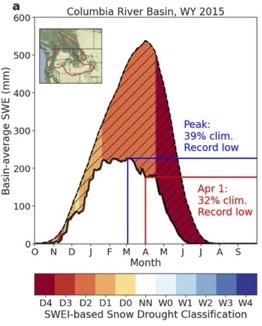Observing, Measuring, and Assessing the Consequences of Snow Drought
We compile a hemispheric ensemble of in situ, satellite, and reanalysis snowpack datasets. We use this ensemble to evaluate the scientific challenges and uncertainties arising from differences in defining and measuring snow droughts and to identify opportunities to leverage this information to better understand the significance of snow droughts.
We show that a clearer quantification of what constitutes a snow drought, including its uncertainties, improves our ability to anticipate costly and disruptive warm-season droughts, which is vital for informing risk management and adaptation to changing snow regimes.
Warmer and shorter winters from climate change will reduce snowpacks in most seasonally snow-covered regions of the world, with consequences for freshwater availability in spring and summer when people and ecosystems demand water most. Recent record-low snowpacks, such as those in the winters of 2013/14 and 2014/15 in the western United States, have led to a surge in research on “snow droughts.” Despite the importance of understanding snow droughts, there is no agreed-upon definition of what they are, how best to measure them, and how such snow droughts connect to warm-season impacts.

